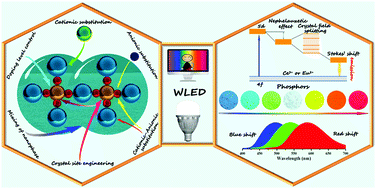Recent progress in luminescence tuning of Ce3+ and Eu2+-activated phosphors for pc-WLEDs
Abstract
Nowadays, phosphor converted white light-emitting diodes (pc-WLEDs) have been widely used in solid-state lighting and display areas due to their superior lifetime, efficiency, and reliability as well as significant reduction in power consumption. Phosphors are indispensable components of pc-WLED devices, and their luminescence properties determine the quality of WLED lighting and displays. In order to further achieve high luminous efficacy, chromatic stability, and color-rending properties in pc-WLEDs, much effort has been focused on improving current pc-WLED phosphors and developing novel pc-WLED phosphors recently. This review article concerns commonly used rare earth ion (Eu2+ and Ce3+) activated inorganic phosphors, highlighting the important effect of spectral tuning via local structural variations on improving the luminescence performance of phosphors. The main spectral tuning strategies are discussed in detail and summarized, including (1) doping level control; (2) cationic substitution; (3) anionic substitution; (4) cationic–anionic substitution; (5) the crystal-site engineering approach; (6) mixing of nanophases.


 Please wait while we load your content...
Please wait while we load your content...